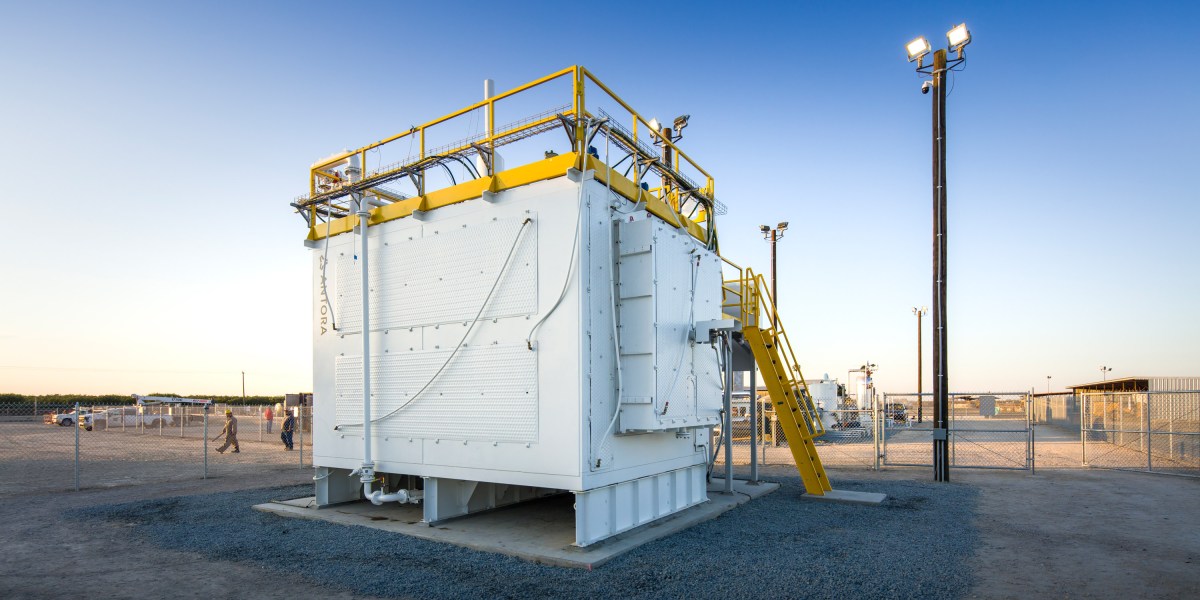
The technology behind Antora’s thermal storage is surprisingly simple. Its modular battery system resembles a steel shipping container, filled with blocks of solid carbon—imagine a three-foot-tall, extremely hot cube—capable of remaining very hot for hours or even days.
The batteries draw in power from renewable energy sources such as solar and wind when it is abundant. That energy is used to heat the carbon blocks to temperatures above 1,800 °C, hot enough for heat-hungry industries like steel. These blocks are encased in thick insulation and covered with another layer of steel, so they’re safe to touch even when the materials inside are extremely hot. When needed, the stored heat can be supplied directly or converted into electricity through thermophotovoltaic cells.
Using solid carbon for heat storage has several benefits. Carbon is naturally abundant and cheap to obtain. It can also withstand high temperatures over a long period—Antora asserts that its batteries will last for decades.
As it stands, heat batteries are still a nascent industry. However, there’s a big untapped market and promising potential for growth, says Jeffrey Rissman, a senior director of industry at the San Francisco–based climate think tank Energy Innovation. With the European Union’s emissions trading system and other regulations driving up the cost to produce and sell emissions-heavy materials, “there is a growing interest in how to affordably decarbonize industrial production,” he says.
There are other competing players on the field. Rondo Energy uses a slightly different technology and storage medium to create similar thermal batteries. It already operates a manufacturing facility and recently announced plans to expand production capacity.
Blaine Collison, an executive director at Renewable Thermal Collaborative, a coalition working to decarbonize industrial heat, has closely monitored the heat-battery sector for several years and believes it is “on the verge of substantial initial scaling.”
He says that while there’s no single solution to the massive decarbonization challenge posed by heavy industry, heat batteries are especially valuable because they address multiple issues simultaneously. They alleviate pressure on the grid by storing excess renewable energy while delivering a cleaner source of heat to industries that have historically relied on fossil fuels.
“It’s a simple yet inexpensive technology that can solve many problems,” Collison says. “That’s a win by itself.”
